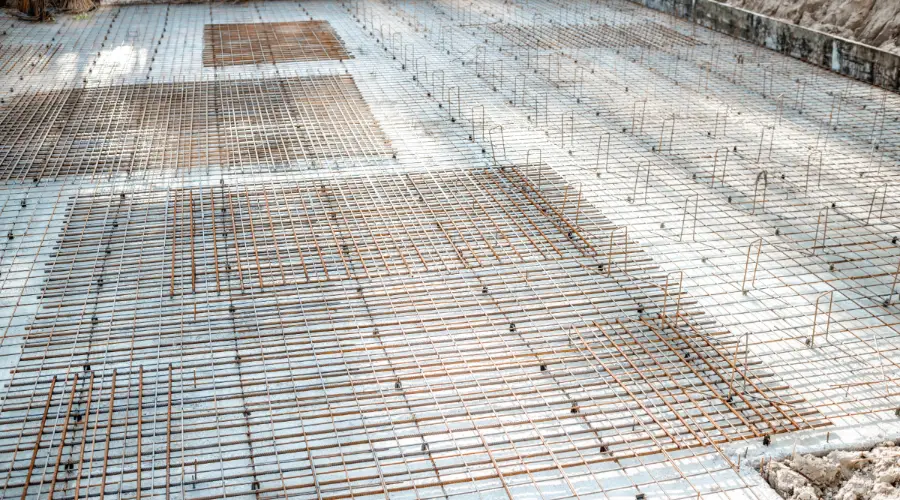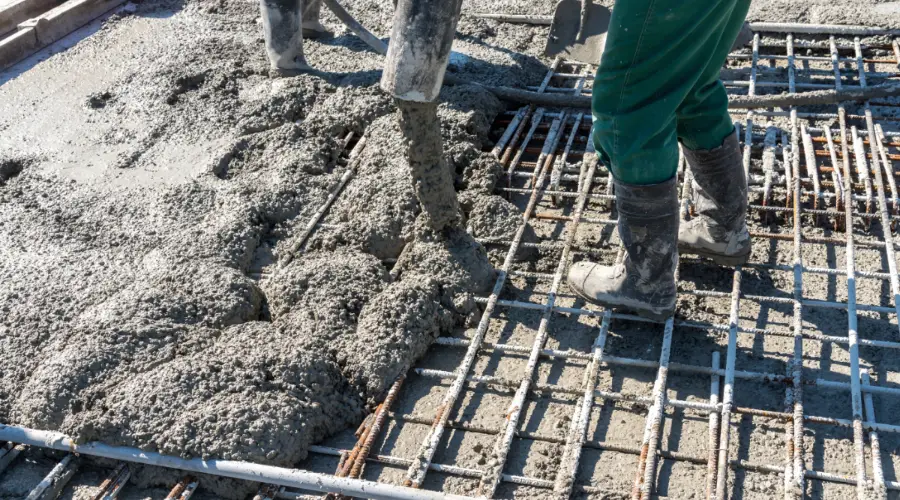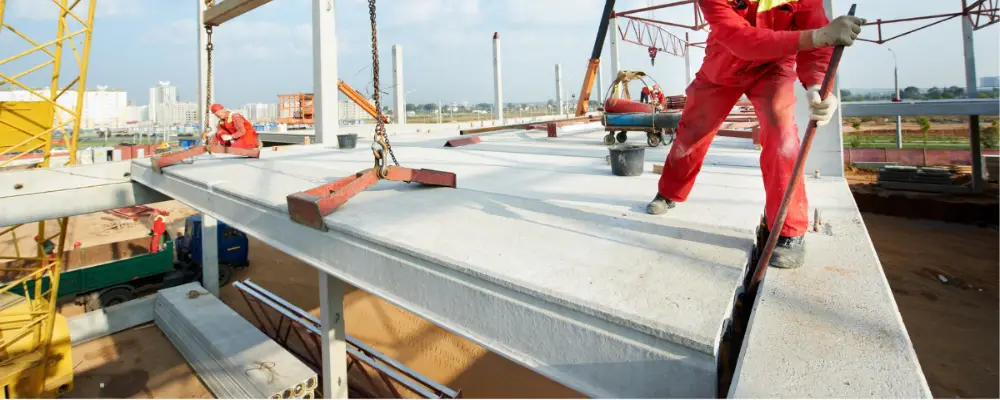A slab is a flat, horizontal structure of a building that is used to create roofs, floors and ceilings and is supported by columns, beams and other structural elements. There are different types of slabs in the construction industry and the flat slab with drop panels is something unique that provides high strength and stability. This blog will help you understand flat slabs with drop panels, their features, designing and construction process.
What is a Flat Slab with Drop Panels?
A flat slab with drop panels is a two-way reinforced concrete slab that is supported by columns without beams. It has thick drop panels (local thickenings of the slab) above the columns. This provides strength and stability to the slab, making it suitable for withstanding heavy loads. This slab provides good design flexibility without sacrificing the structural integrity of the building.
Features of Flat Slabs with Drop Panels
- The drop panels provide improved stability to the slab to help it withstand shear forces caused by concentrated loads around the columns.
- Its improved shear strength reduces the risk of shear failure.
- Unlike other reinforced flat slabs, it doesn’t have beams, providing unobstructed ceiling spaces and reduced floor-to-floor height.
- The thicker panels around the columns provide excellent resistance against fire.
- It provides good design flexibility due to the absence of beams.
- Such slabs require lower time to construct, since the complication of shuttering and reinforcing beams is absent.
Applications of Flat Slabs with Drop Panels
- This integrated structure is used for the construction of high-rise residential buildings, where large open spaces and minimal structural interference are crucial.
- This structure is ideal for multi-storeyed commercial buildings, where higher amounts of usable interior spaces are crucial.
- A flat slab with drop panels is ideal for multi-storeyed parking garages to maximise the parking space.
- This structure is useful for industrial spaces to support heavy loads in an open space for storage.
- This structure can be used for places with high traffic including hospitals, hotels, schools, auditoriums, theatres, stadiums and airport terminals.
- In some areas, the flat slab with drop panels can be used to construct bridges in urban areas.
Design and Construction Process
Design Considerations
Thickness of Flat Slabs
As per CI 31.2.1 of IS 456-2000, the minimum thickness for flat slabs with drop panels is typically around 12.5 cm. The maximum value of the ratio of a larger span of thickness shall be 40 (if mild steel is used), and 32 (if Fe 415 or Fe 500 is used). The minimum thickness of the flat slab shall not be less than 125 mm.
Drops
As per IS 456-2000, the drop panels of the flat slab shall be rectangular in plan and have a length in each direction not less than 1/3rd of the panel in that direction. The ratio of the longer span to the shorter span within a panel should not be greater than 2. The end span must not be greater than the interior span.
Slab Reinforcement

- The spacing of the bars in a flat slab should not exceed two times the slab thickness.
- The thickness of the drop panel for determining the area of reinforcement should be less than the thickness of the drop, and the thickness of the slab plus ¼ the distance between the edge of the drop and the edge panels.
- The minimum percentage of the reinforcement is the same as the solid slab.
- At least 50% of the bottom bars should be from support to support, and the rest can be bent.
Construction
Installing Formwork
Formworks must be installed for the slab and drop panels in the desired shape and size of the structure.
Placing Reinforcement
Steel reinforcement bars should be laid in a grid within the formwork for slabs, columns and drop panels in the top and bottom layers to improve the tensile and compressive strength.
Pouring Concrete

After the formwork and reinforcements are set, pour the concrete over the entire slab and drop panels. Ensure that the concrete is lump-free and in a homogenous form that provides the required strength and workability. The poured concrete should be completely compacted using vibrators to remove air voids.
Curing
After pouring the concrete, the flat slab and drop panels should be completely cured under a moisture state for at least 28 days to attain maximum strength. Water should be poured on a periodic basis to prevent rapid loss of moisture and improve the strength of the concrete.
Removing Formwork and Finishing
After curing, the formwork is removed carefully without damaging the structure. After this, the surface of the slab and panels are plastered to give a smooth and levelled surface.
Simple Flat Slab vs. Flat Slab with Drop Panels
| Simple Flat Slab | Flat Slab With Drop Panels |
| The simple flat slab has a uniform thickness throughout the slab surface. | The flat slab with drop panels has thickened areas on the slab, especially around the columns. |
| The load-bearing ability of the simple flat slab is limited and is suitable only for shorter spans. | The load-bearing ability of this slab is higher and is generally suitable for longer spans. |
| This slab has moderate resistance to shear forces acting on the structure. | A flat slab with drop panels has enhanced resistance against shear forces due to the presence of drop panels. |
| The design of a flat slab is simple in comparison to slabs with drop panels. | The design of flat slabs with drop panels is complex due to the presence of panels. |
| The cost of constructing a simple flat slab is low. | The cost of constructing the flat slab with drop panels is higher initially, however, it has reduced maintenance costs. |
| The risk of causing structural deflection is high. | The deflection risk of this structure is low due to increased stiffness. |
| The flexibility of the simple flat-slab layout is high. | The flexibility of the flat slab with drop panels is lower. |
Conclusion
Flat slabs with drop panels provide a strong and stable solution for conventional construction projects. They help create well-balanced structures that provide both stability and architectural flexibility and are suitable for all types of large construction, especially for multi-storey buildings where space saving is crucial.

